
Churches of the island
Enniskillen offers visitors a unique blend of natural beauty and cultural richness.
Located in the southwest of Northern Ireland is the county of Fermanagh which takes its name from the Irish Fear Manach. Lakes and waterways, most notably the great expanse of Upper Lough Erne and Lower Lough Erne make up a third of the landscape and reflect a rich early Christian heritage with many relic monasteries and landmarks waiting to be explored.
The landscape of County Fermanagh reflects a rich heritage of our ecclesiastical past and present. From the monastic settlement to enigmatic carved figures there is much to be discovered along the interconnected waterways. Nestled between the shimmering waters of Upper and Lower Lough Erne, Enniskillen is a town shaped by water.
Sacred heritage is woven into the town's very fabric. St Michael’s, with its dramatic French Gothic Revival architecture and exquisite artwork, including a rare oil mural by renowned Irish artist Michael Healy, is a must see. Just a short walk away, the Presbyterian church on East Bridge Street is famously home to a piece of one of the earliest church harmoniums in Ireland. Cross the street to find St Macartin’s cathedral, with roots dating back to the 17th century. Its towering spire and stained glass windows tell the tale of Enniskillen’s evolving spiritual life. Also close by is the unmissable Palladian façade and Corinthian portico of the Methodist church.
Surrounded by gentle hills and pastoral fields it’s a perfect base for exploring one of Ireland’s most enchanting and spiritually resonant landscapes. Come for the churches, stay for the stories, and let the loughs lead you deeper into a land shaped by water, faith, and time.
First though, take a leisurely stroll through bustling Enniskillen as you explore four churches in the island town.
This trail is one of six new trails across Northern Ireland created as part of our Treasure Ireland project, supported by The National Lottery Heritage Fund, which helps to keep places of worship in Northern Ireland open and in good repair.
Find more churches, chapels and meeting houses to visit across Northern Ireland
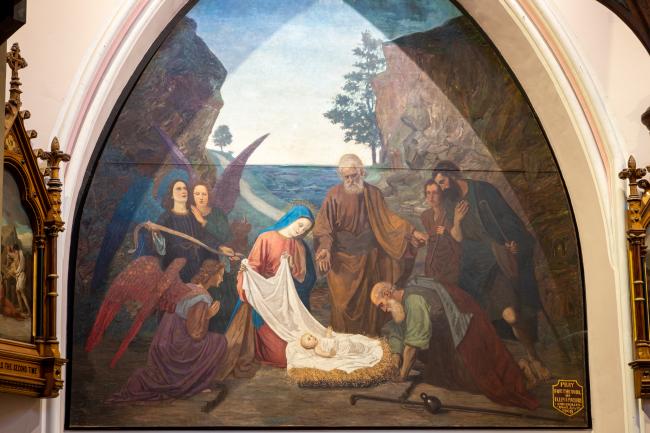
St Michael's Catholic Church
Designed by architect John O’Neill, the church is an exceptional example of French Gothic Revival architecture, with its impressive façade featuring tall lancet windows and an ornate tympanum depicting the Last Judgement. A unique highlight is the golden swallow above the entrance, part of the Golden Swallow Trail that celebrates Enniskillen’s connection to Oscar Wilde.
Inside, the church houses a rare oil mural of The Nativity (c1908) by Michael Healy, one of Ireland’s most celebrated artists, known for his stained glass work. This mural is the only known oil painting by Healy in a church, making it a valuable artistic gem.
The church crypt, accessible via a side entrance, offers a peaceful space for prayer and reflection, allowing visitors to connect with the church’s deep historical and spiritual roots.
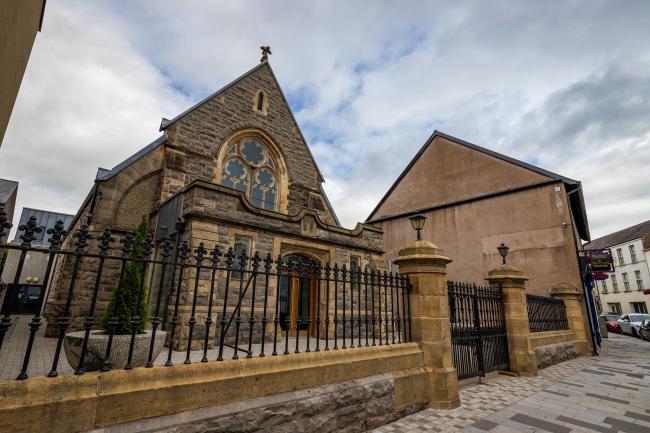
Enniskillen Presbyterian Church
The church, near Enniskillen’s historic East Bridge, was built in 1897 of red Dungannon sandstone in Gothic style. In 1868, the church became central to a major debate when a harmonium was introduced during worship, strongly opposed at the time. The controversy ended in 1891, allowing musical instruments in services. A piece of the original harmonium still remains.
The striking Pulpit Window by George Hillyard Swinstead was first exhibited in London in 1915. It depicts Christ appearing to an officer of the Royal Army Medical Corps supporting a wounded soldier, both set against a backdrop of battlefield chaos. A second poignant memorial window on the west wall commemorates those killed in the Enniskillen bombing on Remembrance Sunday 1987.
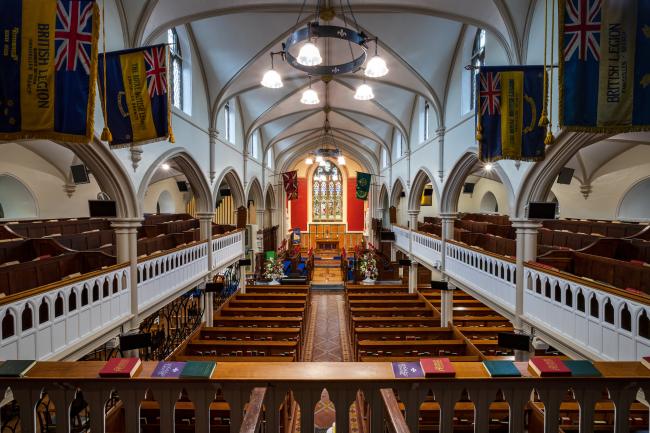
St Macartin’s Cathedral
St Macartin’s rises above the skyline, surrounded by an extensive graveyard filled with gravestones of historical and artistic interest. A stone tablet above the west door bears the date 1637, marking its early foundations when it was first built as a parish church dedicated to St Anne. The building of the church was commissioned by Captain William Cole, who played a central role in developing Enniskillen during the 17th century. The Cole family vault lies beneath the church.
While some remnants of the 17th century church remain, the structure seen today is largely from 1841, built in a striking perpendicular Gothic style. The cathedral features a clerestoried nave with six bays and spacious north and south aisles. The chancel, extended in 1889, was later refitted as a World War I memorial in 1923.
Highlights include the original octagonal font dated 1666, a John Smith organ from 1830, and the north chancel, which since 1970 has housed the Inniskilling Regimental Chapel. A poignant memento mori monument within the grounds adds to the cathedral’s solemn charm.
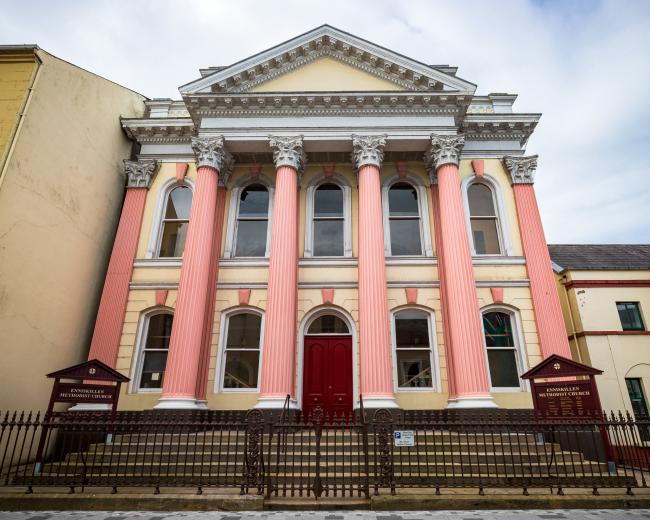
Enniskillen Methodist Church
Originally founded in 1779, the church's current building, designed by architect William J Barre, was completed in 1867. The church boasts a striking Palladian facade, with a Corinthian portico, creating a sense of grandeur and elegance. This impressive architectural style is complemented by intricate wrought ironwork on the gallery, thoughtfully designed with the large hooped skirts of the time in mind.
Inside, the church's beauty continues, with a stunning timber roof and an organ installed in 1906, thanks to a generous donation from Scottish-American philanthropist Andrew Carnegie. The organ remains a central feature of the church, enhancing both the worship experience and its architectural charm.
The story doesn’t stop at the town’s edge.
Continue the journey exploring Fermanagh spiritual past, starting with the mysterious Caldragh Cemetery on Boa Island's southern shore of Boa Island. Standing amidst ancient gravestones Celtic crosses, lies the enigmatic Janus figure, a unique stone carving depicting two faces.
Set sail across the shimmering waters of Lower Lough Erne to reach the idyllic White Island, home to one of Fermanagh's most cherished ecclesiastical treasures, the White Island church. Built in the 12th century, this picturesque church is adorned with intricately carved Romanesque sculptures and medieval gravestones, offering a glimpse into the artistic heritage of Irish Christianity.
Our final destination brings us to the tranquil shores of Devenish Island, where the soaring Irish round tower of Devenish Monastic Site stands as a testament to the area’s rich spiritual religious heritage. The commanding round tower would have stood out as a beacon across the sacred landscape. Irish rounds towers are predominantly found across the island of Ireland, there are however two examples in Scotland. Devenish monastery was founded in the 6th century by Saint Molaise, and you can still experience the sacred architecture including the ruins of the Romanesque church and intricately carved high crosses.
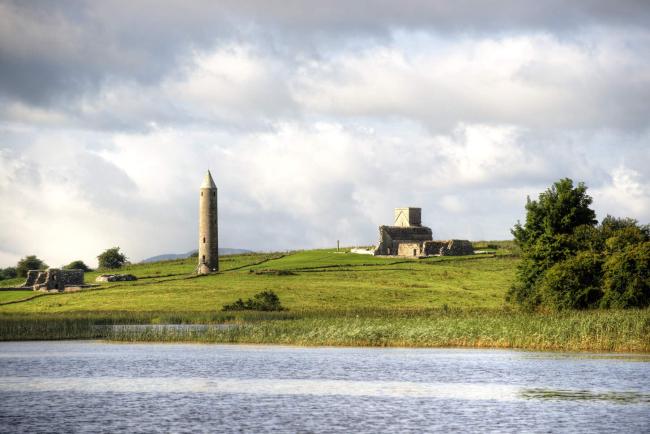
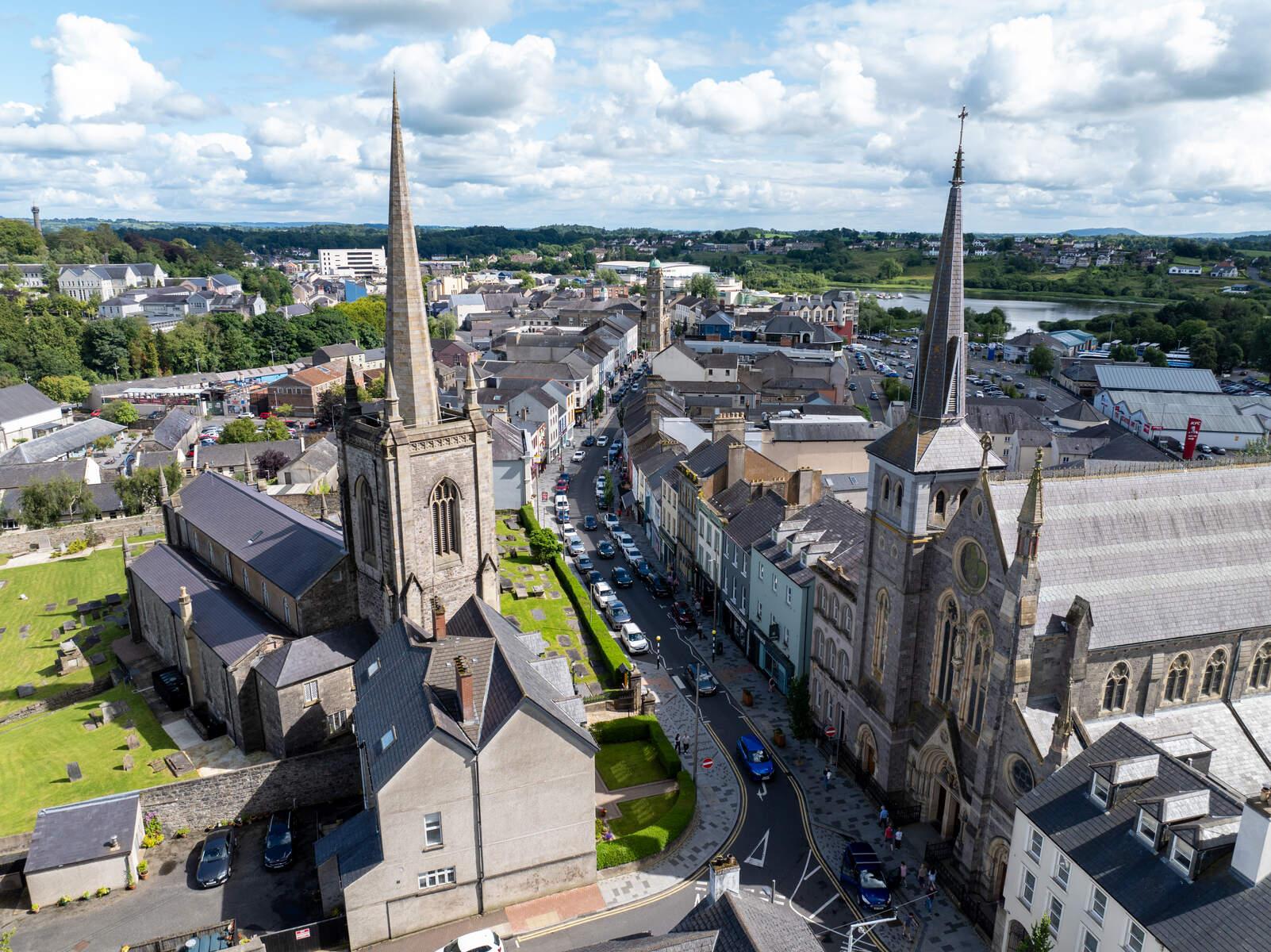
©TourismIrelandByJohuaHannah
Getting here
From Belfast by car: take the A12/ Westlink. Continue onwards as the name changes to M1. Road changes to A4. The journey takes approximately an hour and a half depending on traffic.
From Belfast by bus: from Belfast’s Europa Buscentre where there are a number of services operating to Enniskillen, including the Translink Goldline 261 service. The journey takes about 2 hours and 15 minutes arriving at Enniskillen’s Translink Ulsterbus station.
From Dublin by car: take the M3 motorway northbound towards Cavan and then follow the A3 through Belturbet. Soon after Belturbet, the A3 becomes the A509 Derrylin Road which leads you right into the centre of Enniskillen. The journey of 165 km takes about 2 hours and 15 minutes.
From Dublin by bus: Bus Eireann operates daily services from the central bus station Busárus. The journey to Enniskillen is just under 3 hours. Take the Donegal bus (30 and 30X) from Busárus which stops at the Translink Ulsterbus station.
To visit the loughs and islands: Erne Water Taxi.
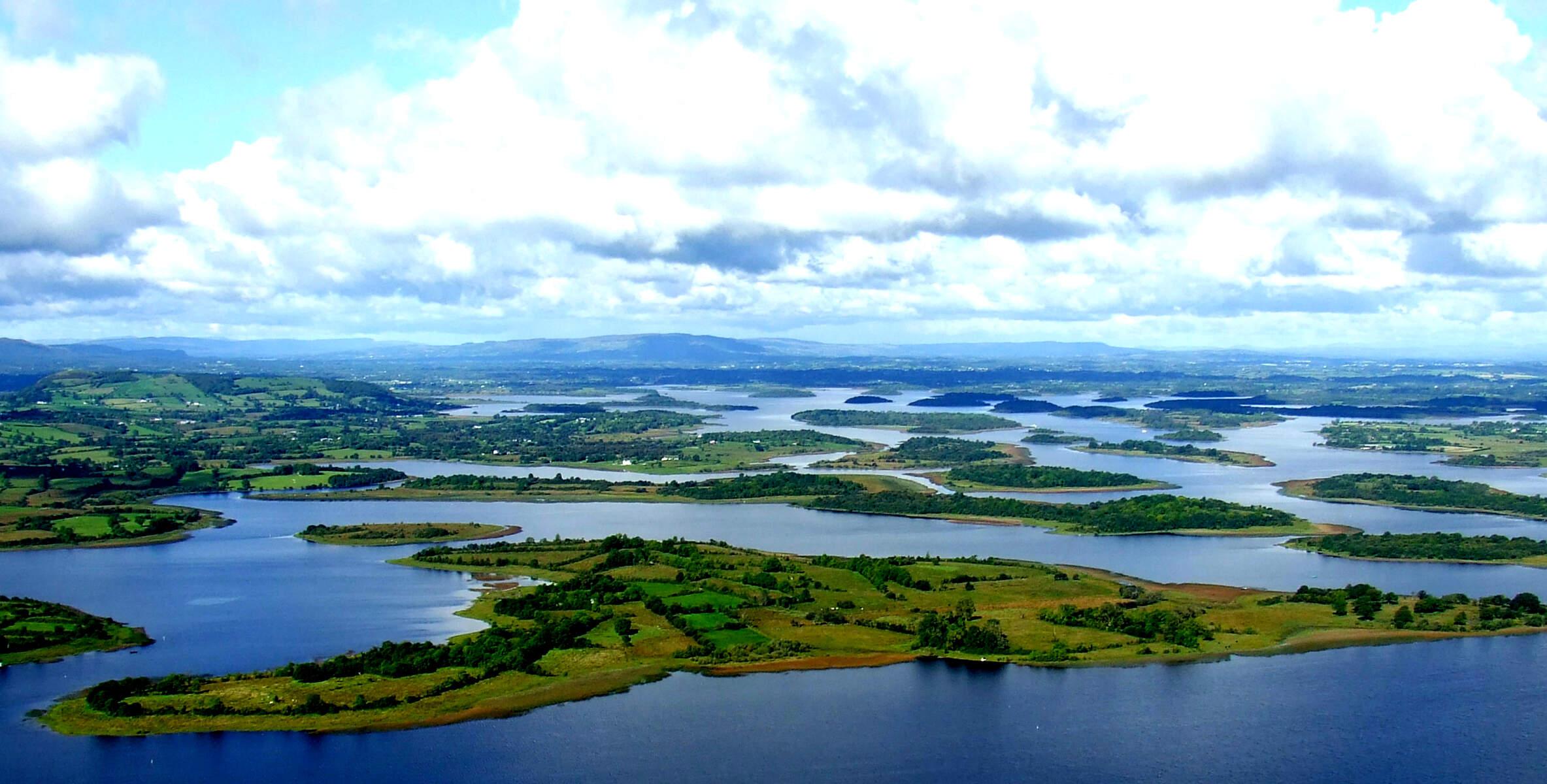
©ErneWaterTaxi
